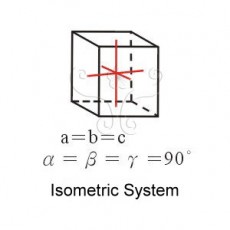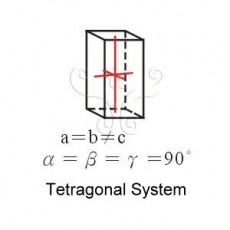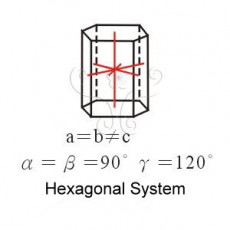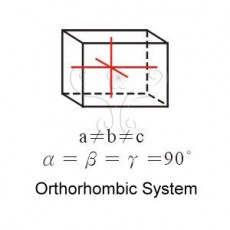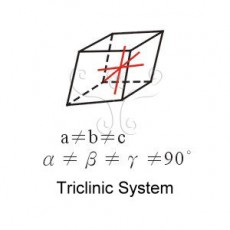|
01 Crystal system
The atomic structures of gemstones are similar to their mineral origin, in that their atomic components are arranged in specific patterns, or crystal structures. There are 6 main families or systems of crystallographic configurations (please refer to the section on mineral crystals):
1. Isometric System – has three equivalent crystallographic axes perpendicular to each other. Examples are diamond, garnet, spinel and lapis lazuli.
2. Tetragonal System – has three perpendicular crystallographic axes; two horizontal axes are of equal length, while the vertical axis is of different length and may be either shorter or longer than the other two. Examples are zircon and rutile.
3. Hexagonal System – has four crystallographic axes; three horizontal axes are equivalent in lengths and intersect each other obliquely at 60°; the fourth axis is perpendicular to the horizontal axes and maybe shorter or longer in length. Examples are Corundum, beryl, quartz and tourmaline.
4. Orthorhombic System – has three crystallographic axes that are or different lengths but perpendicular to each other. Examples are peridot, chrysoberyl, topaz, sillimanite, tanzanite, and cordierite.
5. Monoclinic System - has three unequal crystallographic axes; two of these axes (a and c) are inclined toward each other at an oblique angle and do not intersect one another at right angles; the third axis (b) is perpendicular to the other two. Examples are: orthoclase feldspar, spodumene, diopside, jadeite, and nephrite.
6. Triclinic System – minerals of this system have three unequal axes, all of which intersect at oblique angles. None of the axes are perpendicular to any other axis. Examples are turquoise, kyanite, and albite.
02 Hardness
Hardness measures a gemstone’s resistance to scratching, which is related to the ionic or atomic bonding strengths of the minerals and their chemical components. The most widely used measuring standard for mineral hardness is the Mohs Scale of mineral hardness, created by Austrian mineralogist Friedrich Mohs in 1822, which ranks and standardizes the scratch resistance based on 10 minerals: diamond, 10; corundum, 9; topaz, 8; quartz, 7; orthoclase feldspar, 6; apatite, 5; fluorite, 4; calcite, 3; gypsum, 2; talc, 1. The larger the number, the greater the hardness. The scale is relative between each mineral; there is no absolute ratio between each hardness level.
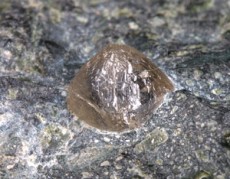 |

Corundum(ruby)
|
| Diamond |
|
03 Toughness
Toughness refers to how well a gemstone can withstand external mechanical stress, such as impacts from falling or hammering, without breaking, chipping and cracking. Toughness is not necessarily identical to hardness; a diamond is the hardest minerals in nature but not the toughest. Jadeite and nephrite may not be as hard as diamonds, but they can withstand hammering without breaking. This is because they have interweaving fiber bundle-like structures that give the minerals their toughness.
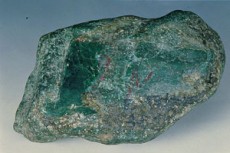 |
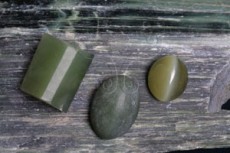 |
| Jadeite |
Nephrite |
04 Density
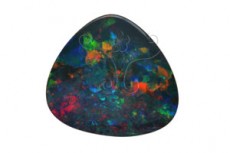 |
| Opal |
05 Cleavage
Cleavage is the tendency of mineral crystals to fracture into defined crystallographic planes. The direction and the availability of cleavage planes are governed by the structures of crystals. The cleavage is always parallel to the crystallographic planes, and is used by the gem industry to cut the stones. For example, jewel makers will use cleavages in diamonds to cut them into desired shapes. Extra care in designing and cutting of jewels is needed so that the gemstones will not break along the cleavage planes when subjected to external impacts.
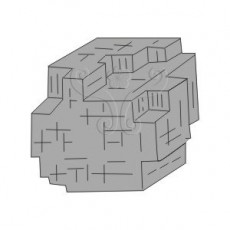 |
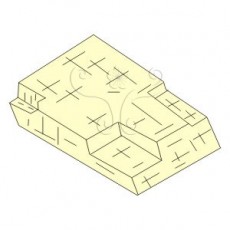 |
| Cleavage pattern of galena |
Cleavage pattern of calcite |
06 Color
Like most other objects, minerals differ in their abilities to absorb, reflect and transmit light at various wavelengths, and therefore will produce different colors. Color is also an important property in determining the value of gemstones. For example, the gemstones ruby and sapphire are both crystals of the mineral corundum, and are made composed of aluminum oxide. Usually a colorless crystal, corundum will produce different colors by having traces of iron, titanium and chromium ions; traces of chromium (Cr3+) ions that replaced Al3+ ions will produce red corundum (ruby); traces of iron and titanium ions result in blue color, producing blue sapphire. These ions that give jewels their colors are called “color or pigment ions”. Variations of these trace ions in the same crystal will produce brilliant colors - which is one of the reason why gemstones are so fascinating.
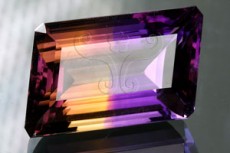 |
Ametrine
(Fe2+ and Fe3+ co-exist) |
07 Luster
Luster describes the way light reflects off the surfaces of gemstones. Minerals with high refractive index and can reflect lights well are said to have “adamantine luster,” such as diamond, zircon and rutile; most gem minerals have glassy or “vitreous” luster, such as corundum, emerald, aquamarine, chrysoberyl, quartz, topaz, feldspar, and tourmaline. Sometimes special types of luster develop due to lights interact with elements of gemstones such as internal arrangements, color and smoothness of surfaces, such as the “pearl luster” on pearls and opals; minerals like peridot, jadeite and nephrite have “greasy, fat like luster”; opaque minerals such as turquoise and lapis lazuli exhibits “waxy luster”.
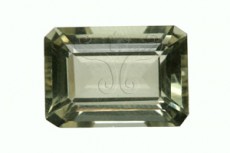 |
| Orthoclase (glassy luster) |
08 Transparency
Transparency measures the degree of light that passes through a gemstone. Transparency of a mineral is closely related to factors such as amount of impurities, inclusions or cleavages. For example, in a 1 cm thick gemstone slice, if light can easily pass through it, then it can be said that the gemstone is transparent; examples of transparent gemstones are diamonds, corundum and quartz crystals; if only a little light passes through, then it is said to be translucent; garnet, tourmaline, jadeite and nephrite are some of the translucent minerals. If the light cannot pass through at all, then it is said to be opaque; turquoise, lapis lazuli and most of the organic gemstones opaque minerals. Gemstone minerals usually have weaker light absorption and reflectance, so they appear mostly transparent or translucent. The degree of transparency in a same type of gemstone may also differ by geographic regions or mining deposits. The degree of transparency and internal imperfections are important factors that determine the quality of a gemstone.
 |
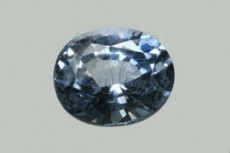 |
| Jadeite (translucent) |
Corundum (transparent) |
09 Dispersion
Dispersion of a mineral refers to how light is broken down into its individual wavelength components – red, orange, yellow, green, blue, violet and purple -, when it hits the surface of a gemstone. This breakdown of light into its individual wavelengths of spectrum is also referred to as the “fire” of a gemstone; the higher the dispersion, the more prominent the rainbow color display is. Diamonds have dispersion as high as 0.044 and therefore capable of displaying brilliant colors; zircons also have high dispersion (0.038) and can display brilliant colors like diamonds when refined into faceted gemstones.
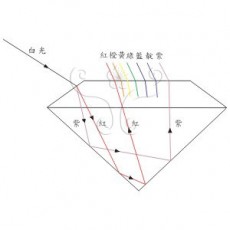 |
| Dispersion picture of a gemstone |
10 Refractive Index
Gemstones have a higher density than air, therefore when light enters the gemstone it will slow down and change direction, resulting in refraction. The ratio between the speed of light in the air and inside of an object is called the refractive index. Refractive indices in gemstones can be categorized into single and double refractions. The crystals of isometric gemstones, being isotropic in their atomic arrangements, exhibit single refraction since the velocity and direction of lights inside these gemstones remain the same; all other types of crystal systems are anisotropic, meaning that the velocity of light differs in the direction in these gemstones. Tetragonal and hexagonal gemstones have 2 refractive indices; orthorhombic, monoclinic and triclinic gemstones have 3 refractive indices. Whether it is 2 or 3 refractive indices are collectively referred to as double refraction, and the differences between each index are referred to as birefringence. Most gemstones have consistent refractive indices, except for emeralds, which may vary depend on the locales of the deposit. The degree and category of the refractive index are therefore important parameters in gemstone appraisal. Refractometer, a simple optical instrument, is used to measure the refractive index of a gemstone.
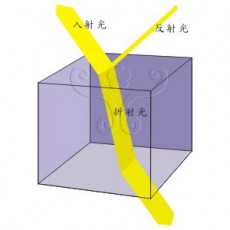 |
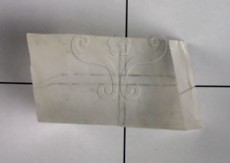
Double refraction of icelandic calcite
|
| Reflection and refraction of light |
|
11 Pleochroism
When observing gemstones with birefringences, one may occasionally observe differences in shading or color changes. This is referred to as pleochroism (“many color), and is caused by absorption light at different wavelengths by gemstones. A gemstone with two colors is said to have dichroism; 3 colors is referred to as trichroism. Care should be taken during cutting and refining of pleochroic gemstones to select the best direction of the crystal arrangement in order to emphasize the colors of these gemstones.
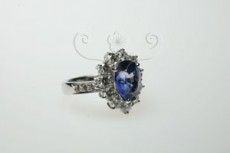 |
| Blue corundum (dichroism) |
12 Chatoyancy
Chatoyancy, or “cat’s eye,” is an optical phenomenon caused by light reflecting off a gemstone with internal fibrous minerals or inclusions arranged in parallel direction. When these gemstones are cut in specific directions, the reflected light display a pattern that is perpendicular to the fibrous streaks, which is similar to that a cat’s eye. Gemstones displaying chatoyancy are usually cut en cabochon, and their values are determined by color and the qualities of the chatoyancy. A good chatoyancy should be straight, finely sliced, bright, in the center of the jewel, and lively. Gemstones with chatoyancy qualities include chrysoberyl, tourmaline, aquamarine, moonstone, jade, scapolite, quartz, and diopside. Cymophane, a type of translucent yellow chrysoberyl, is the rarest and most valuable chatoyant gemstone. Jadeite produced in Feng Tian of Hualien, Taiwan may also possess some chatoyancy, which is called “Cat’s eye nephrite.” Tiger’s eye is another type of chatoyant gemstone that owes its light phenomenon to the replacement of fibrous crocidolite with quartz.
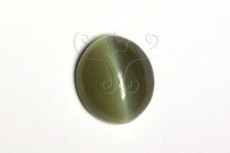 |
 |
| Cat’s eye jade |
Cat’s eye sillimanite |
13 Asterism
Asterism is a type of optical phenomenon caused light reflecting off impurities inside of gemstones, such as fibrous materials arranged in specific directions, mineral, gas or liquid inclusions. When the gemstones are cut en cabochon in specific directions, light reflected off the surfaces of these gemstones will spread out into a star-like pattern, hence give rise to the name asterism (star-like). There are usually 4 or 6 rays of light off the centers of these asterisms, which are related to how a mineral crystallizes. Star rubies and sapphires are valuable gemstones with asterisms; they belong to the hexagonal crystal system. To produce the desired star light effect, one must select gemstones with specific types of inclusions and perform cuts along the perpendicular axis (C axis) to achieve good quality asterism.
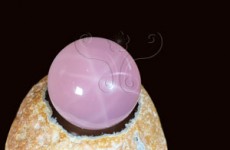 |
 |
| Rose quartz (6 rays) |
Diopside (4 rays) |
14 Color Change
Gemstones may change their colors depending on the angles of light entering into them. Also, gemstones may change colors when shined by lights at different wavelengths. Such property is referred to as color change. Some of the gemstones that exhibit this characteristic are precious opals, labradorites, Alexandrites and fluorites.
 |
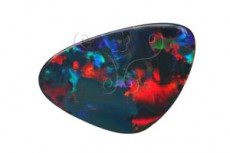 |
| Labradorite |
Opal |
The international digital archives and e-learning communication project of the National Museum of Natural Science
National Museum of Natural Science
|






